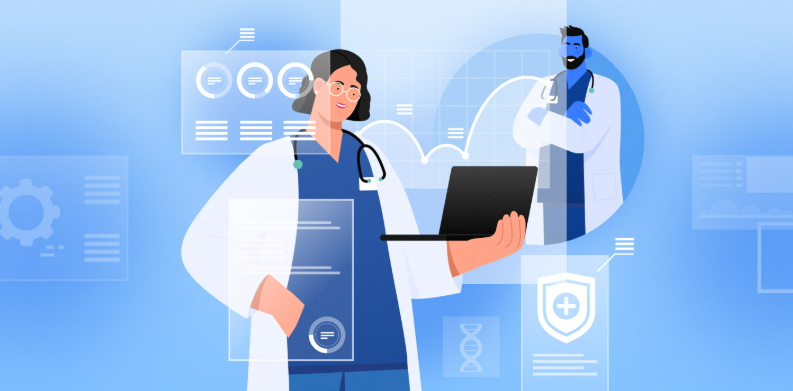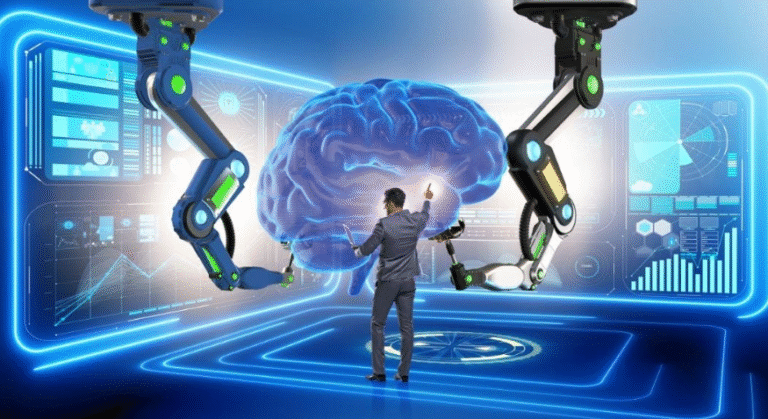How Technology is Transforming Healthcare Services
Introduction: The Role of Technology in Modern Healthcare
Technology has revolutionized nearly every aspect of our lives, and healthcare is no exception. From diagnosis and treatment to patient management and medical research, technological innovations have reshaped how healthcare services are delivered. This transformation not only improves the quality of care but also makes healthcare more accessible, efficient, and personalized. In this article, we explore the myriad ways technology is reshaping healthcare services, driving advancements that promise better patient outcomes and a more resilient healthcare system.
Advancements in Medical Devices and Equipment
One of the most visible impacts of technology in healthcare is the rapid development of medical devices and equipment. Modern devices enable precise monitoring and treatment of various health conditions, allowing for timely interventions and enhanced patient care.
See also: How Artificial Intelligence is Changing Everyday Life
Wearable Health Technology and Remote Monitoring
Wearables like smartwatches and fitness trackers have become commonplace, providing continuous health monitoring. These devices track vital signs such as heart rate, blood oxygen levels, and even sleep patterns. For chronic disease patients, wearable technology offers the potential to detect early warning signs and reduce hospital visits through remote monitoring, empowering patients to take charge of their health.
Robotics in Surgery and Patient Care
Robotic-assisted surgeries have transformed complex procedures, enhancing precision and reducing recovery times. Robots also assist in patient care, such as in rehabilitation and eldercare, providing support that increases the quality of life while alleviating staff shortages.
Digital Health Records: Enhancing Data Accessibility
The shift from paper-based records to electronic health records (EHRs) has significantly improved data accessibility and coordination between healthcare providers.
Electronic Health Records (EHRs) and Patient Portals
EHRs allow healthcare providers to access comprehensive patient histories instantly, improving decision-making and reducing errors. Patient portals offer patients direct access to their medical information, appointment scheduling, and communication with providers, fostering transparency and engagement.
Data Security and Privacy Concerns in Healthcare
With digitization comes the challenge of safeguarding sensitive patient data. Cybersecurity measures and compliance with regulations like HIPAA are critical to maintaining trust and protecting personal health information from breaches.
Telemedicine: Bridging Distance and Access
Telemedicine has emerged as a vital solution to healthcare access, particularly for rural or underserved populations.
Benefits of Telehealth for Patients and Providers
Telehealth reduces travel time, lowers costs, and provides timely care. It enables patients to consult specialists remotely and supports continuous care for chronic conditions without frequent hospital visits.
Challenges and Limitations of Telemedicine
Despite its benefits, telemedicine faces obstacles including technology access gaps, regulatory hurdles, and the inability to perform physical exams, which can limit its effectiveness in certain situations.
Artificial Intelligence and Machine Learning in Diagnostics
AI and machine learning are changing the landscape of medical diagnostics, offering powerful tools to interpret complex data.
AI-Powered Imaging and Predictive Analytics
AI algorithms analyze medical images such as X-rays and MRIs with high accuracy, often spotting abnormalities that might be missed by the human eye. Predictive analytics helps forecast disease outbreaks and patient risks, enabling proactive care.
Improving Accuracy and Speed in Diagnosis
AI-driven diagnostic tools streamline workflows, reduce human error, and accelerate diagnosis, which is crucial for conditions requiring rapid intervention.
Blockchain Technology for Secure Health Data Management
Blockchain offers a decentralized and secure way to handle healthcare data, enhancing transparency and trust.
Enhancing Transparency and Trust
By creating immutable records, blockchain ensures data integrity, which is vital for clinical trials, insurance claims, and patient records.
Potential Use Cases in Healthcare Systems
From drug traceability to consent management, blockchain applications in healthcare are expanding, promising safer and more efficient processes.
Mobile Health Apps: Empowering Patients
Mobile apps have become instrumental in encouraging healthy habits and disease management.
Personalized Health Tracking
Apps offer tailored insights based on user data, helping individuals monitor nutrition, exercise, medication schedules, and symptoms.
Integration with Healthcare Providers
Many apps now connect directly with providers, facilitating remote monitoring and personalized advice.
Impact of 3D Printing on Healthcare Services
3D printing is opening new horizons in medical treatment and education.
Customized Prosthetics and Implants
3D printing allows for the creation of patient-specific prosthetics and implants, improving comfort and functionality.
Accelerating Drug Development and Medical Training
3D-printed tissue models enhance drug testing and provide realistic training tools for medical professionals.
The Future of Healthcare: Emerging Technologies
As technology evolves, new tools promise to further revolutionize healthcare.
Virtual Reality (VR) and Augmented Reality (AR) in Therapy
VR and AR are increasingly used in pain management, physical therapy, and surgical training, offering immersive and interactive experiences.
Genomics and Precision Medicine
Advancements in genomics enable treatments tailored to an individual’s genetic makeup, improving efficacy and reducing side effects.
Overcoming Challenges in Technology Adoption
Despite promising benefits, integrating new technologies into healthcare faces several hurdles.
Infrastructure and Training Needs
Healthcare facilities require upgraded infrastructure and staff training to effectively implement new technologies.
Ethical Considerations and Regulatory Compliance
Balancing innovation with patient rights, privacy, and safety requires clear ethical guidelines and regulatory oversight.
Frequently Asked Questions (FAQs)
How is telemedicine improving healthcare accessibility?
Telemedicine allows patients in remote or underserved areas to consult healthcare providers without travel, improving timely access to medical care.
What role does AI play in healthcare diagnostics?
AI enhances diagnostics by analyzing complex data rapidly and accurately, assisting in early detection and personalized treatment.
Are wearable devices reliable for health monitoring?
Modern wearables provide reliable data for many vital signs, though they should complement, not replace, professional medical evaluations.
How does blockchain enhance healthcare data security?
Blockchain ensures secure, tamper-proof records, improving data integrity and patient trust in health information management.
What challenges do healthcare providers face with new technology?
Challenges include infrastructure costs, staff training, regulatory compliance, and managing patient data privacy.
What is the future outlook for healthcare technology?
Emerging tech like VR, genomics, and AI promise more personalized, efficient, and accessible healthcare worldwide.
Conclusion: Embracing Technology for Better Healthcare Outcomes
Technology is undeniably transforming healthcare services, making them more precise, accessible, and patient-centered. As innovations continue to emerge, the healthcare sector must embrace these tools while addressing associated challenges to maximize their benefits. By doing so, the future of healthcare looks promising—offering improved outcomes, greater efficiency, and enhanced quality of life for patients everywhere.


